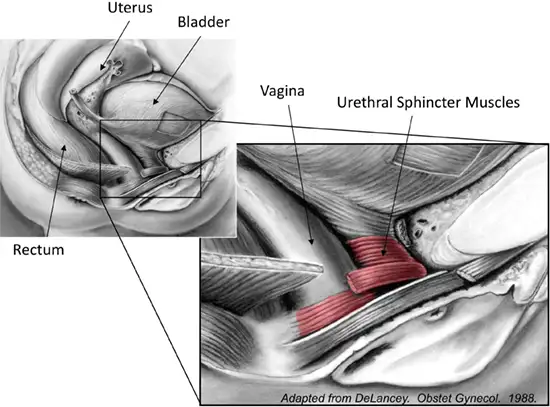



Treatment of Urinary Incontinence in Charlotte North Carolina
Dr. Stepp believes that women should not have to live with urinary incontinence.
Stress Urinary Incontinence
Stress incontinence is quite common among women. Studies suggest that approximately 30% to 50% of women experience some degree of stress incontinence. The most common contributing factor is pelvic trauma during pregnancy and childbirth. Traditionally, pelvic floor physical therapy and exercises can be prescribed. These are certainly helpful and should be encouraged for every women.
Urethral Slings
For those who have completed childbearing, a quick outpatient sling procedure can be a great option. This minimally invasive procedure involves placing a sling to support the urethra and prevent leakage with activities, laughing, coughing, running, etc. Typically lasting 15 minutes or less, it has a high success rate and allows most patients to resume normal activities within two weeks. Since its introduction in the 1990s, over 90% of patients have reported satisfaction with their sling procedures. But some women are leery about using a synthetic material in their body. Fortunately, there are now innovative and exciting new treatments available.
Platelet-Rich Plasma (PRP) Therapy
Regenerative medicine techniques show great promise in repairing and revitalizing pelvic tissues, improving bladder function with a woman's own growth factors. One groundbreaking option is Platelet-Rich Plasma (PRP) therapy. This natural treatment involves injecting a woman's own concentrated platelets, which contain several types of growth factors, into the pelvic tissues to stimulate healing and regeneration. The procedure is performed in the office with no recovery restrictions, allowing patients to return to their daily activities immediately. However, it's important to note that while PRP therapy offers a highly personalized approach, it may take time to see the full results and might require more than one injection to achieve optimal outcomes.
Bulkamid is another minimally invasive treatment for stress urinary incontinence. It involves injecting a gel-like substance into the tissue surrounding the urethra to provide added support and reduce leakage. No anesthesia is required. Patients can usually resume their normal activities immediately after the procedure, with minimal downtime. Bulkamid is known for its durability, with studies so far showing effectiveness up to 7 years. This long-term effectiveness makes it a compelling option for managing stress incontinence, providing sustained relief and reducing the need for frequent repeat treatments. However, individual results can vary, and some patients may require additional treatments over time to maintain optimal outcomes.
Additionally, laser vaginal therapy utilizes advanced laser technology to rejuvenate vaginal tissues, enhancing support for the urethra and reducing incontinence symptoms.
These advancements in treatment offer new hope and significantly improved outcomes for managing stress incontinence, making it easier than ever to regain control and enhance quality of life.